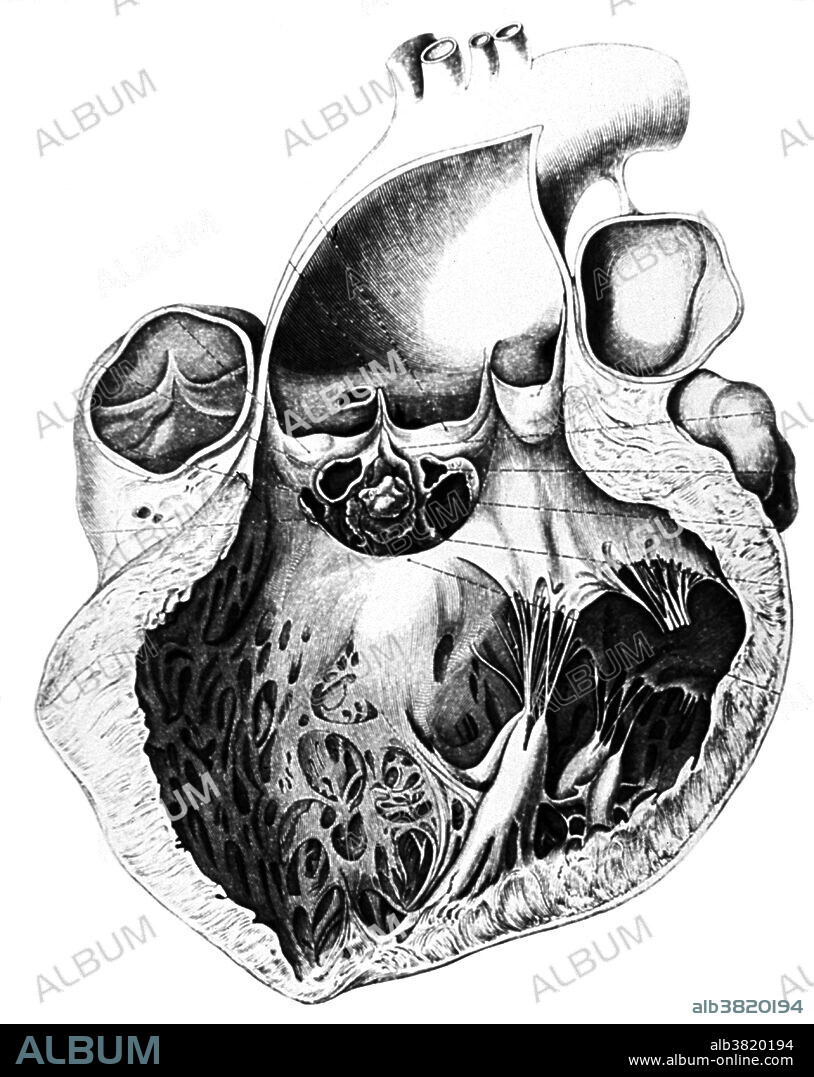alb3820194
Heart Anatomy, Carl von Rokitansky, 1875

|
Add to another lightbox |
|
Add to another lightbox |



Buy this image.
Select the use:

Title:
Heart Anatomy, Carl von Rokitansky, 1875
Caption:
Cardiovascular system created by von Rokitansky for his pathological and anatomical treatise, Die Defecte der Scheidewande des Herzens, 1875. Carl von Rokitansky (February 19, 1804 - July 23, 1878) was a Bohemian physician, pathologist, humanist philosopher and liberal politician. As a young professor, he recognized that the discipline of pathological anatomy could be of great service to clinical work in the hospital, because it could offer new diagnostic and therapeutic possibilities to the bedside physician. His name is associated with many diseases/morphologic features of disease. He developed a method of autopsy which consisted mainly of in situ dissection, and is said to have supervised 70,000 autopsies, and personally performed over 30,000, averaging 2 a day, 7 days a week, for 45 years. He believed scientists should first regard humans as conscious and free-willing subjects and only then follow their urge toward knowledge. The feeling of humanity would be lost if physicians regarded human beings purely as research objects. Thus Rokitansky brought up for the first time the question of ethics in medicine. He helped to shape the era of Austrian high liberalism. He died in 1878 at the age of 74.
Credit:
Album / NLM/Science Source
Releases:
Model: No - Property: No
Rights questions?
Rights questions?
Image size:
3600 x 4530 px | 46.7 MB
Print size:
30.5 x 38.4 cm | 12.0 x 15.1 in (300 dpi)
Keywords:
1870S • 1875 • 19TH CENTURY • ABNORMAL • ANATOMICAL • ANATOMY • ART • ARTWORK • BW • CARL FREIHERR VON ROKITANSKY • CARL ROKITANSKY • CARL VON ROKITANSKY • CIRCULATORY SYSTEM • CYTOPATHOLOGICAL • CYTOPATHOLOGY • DISEASED • DRAWING • GROSS ANATOMY • HEART • HISTOPATHOLOGICAL • HISTOPATHOLOGY • HISTORIC • HISTORICAL • HISTORY • ILLUSTRATION • ILLUSTRATIONS • KAREL ROKYTANSKY • KARL ROKITANSKY • KARL VON ROKITANSKY • MEDICAL • MEDICINAL • PATHOLOGICAL ANATOMY • PATHOLOGICAL • PATHOLOGY • ROKITANSKY • SCIENCE • UNHEALTHY • VON ROKITANSKY
 Pinterest
Pinterest Twitter
Twitter Facebook
Facebook Copy link
Copy link Email
Email
